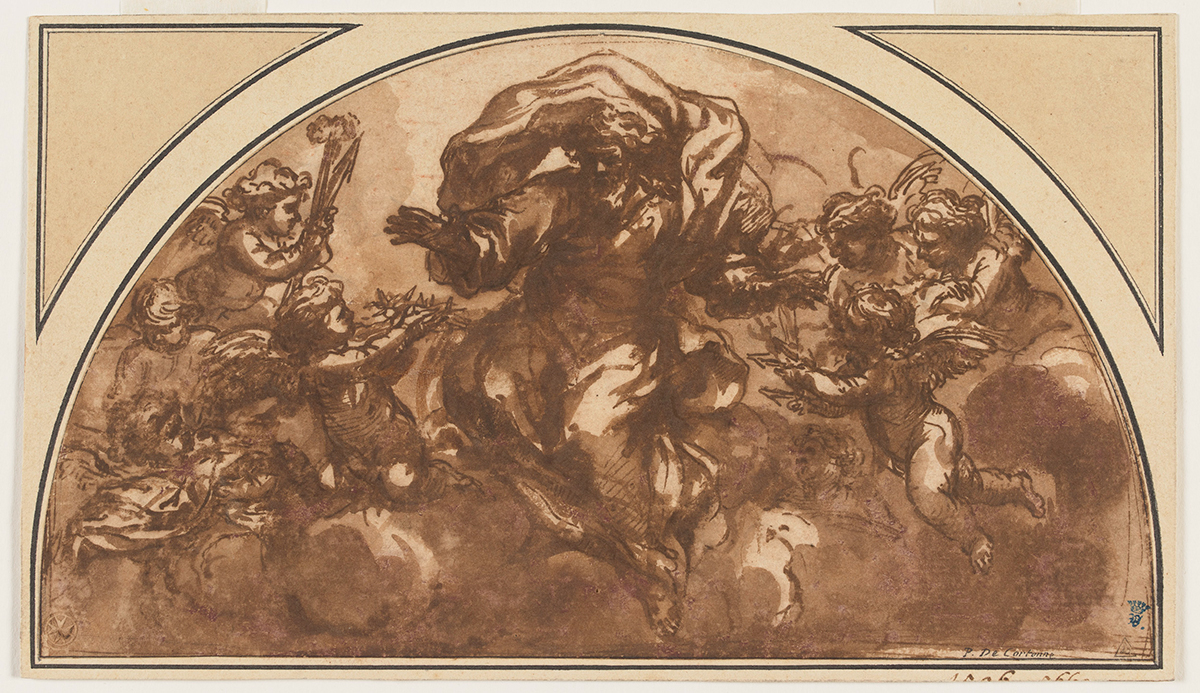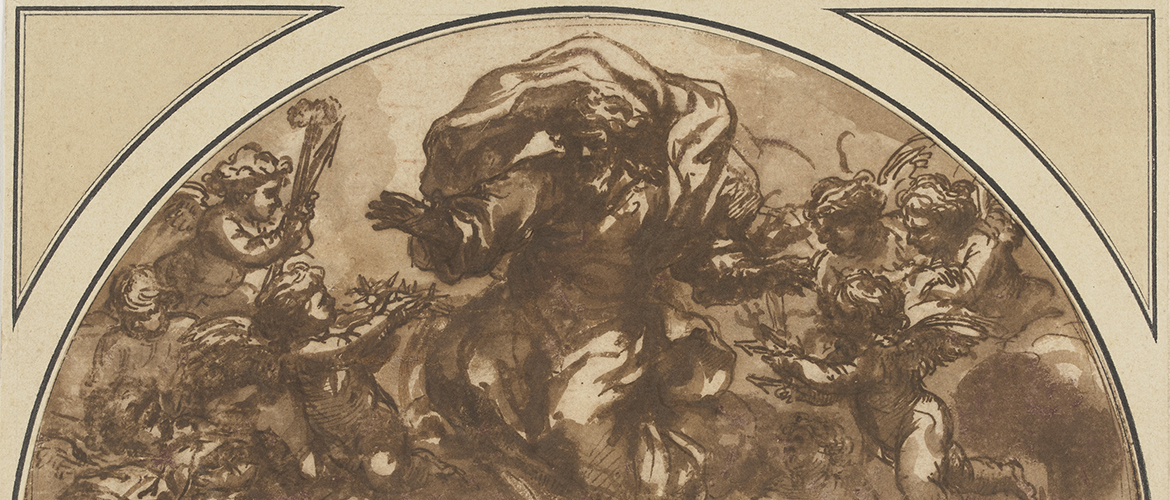Pietro Berettini, known as DA CORTONA (Rome, 1596 - 1669)
Dieu le Père entouré d’anges tenant les instruments de la Passion, pen, brown ink, brown wash, 13.6 x 24.5 cm, EBA 11273
Pietro entered the studio of the Florentine Andrea Commodi in 1609 in Cortona and followed his master to Rome in 1612. The assiduous study of antiquity, Raphael's frescoes and the renewed interest in Rome for Venetian painting in the 1620s were the source of Pietro de Cortona's art, who was to become one of the most famous representatives of Roman Baroque painting. L'enlèvement des Sabines of 1629 (Rome, Pinacoteca Capitolina), full of movement and action, painted in a clear and golden color, is the manifesto. The links that Cortona established with Marcello Sacchetti, Cassiano del Pozzo and the Barberini - including Pope Urban VIII - enabled him to obtain prestigious commissions: the History of Saint Bibiana painted in fresco in the church of the same name (1624-26) or The Triumph of Divine Providence, an immense ceiling commissioned by Pope Urban VIII for his Roman palace, executed from 1632 to 1639. Author of numerous easel or gallery paintings (La Vrillière Gallery in Paris), he demonstrated his talent as a decorator in Florence (Pitti Palace) and Rome (Chiesa Nuova, Pamphili Palace). At the beginning of the 1660s, he worked for the mosaics of the domes of St. Peter. His last period is finally marked by an intense activity of architect. Cortona also trained many artists - from Ciro Ferri to Lazaro Baldi, from Gimignani to Cortese - who dominated Roman artistic life in the second half of the 17th century.
This very accomplished drawing of Dieu le Père entouré d’anges tenant les instruments de la Passion is a recent discovery. The setting, the supple and expressive treatment of the draperies, are characteristic of Cortona's art of the years 1630-1635. Chiseling the volumes with the pen, and eliminating, so to speak, the space around his main figures, Cortona achieves a real density, creating the supernatural atmosphere that suits a scene exalting the supreme divinity. The artist gives his full attention to the figure of God the Father, a true Cortonesque type with his tousled hair and the floating drapery. The highlights of the wash give the draperies and faces the theatrical sense that the painter was so fond of.
Although the attribution to Cortona is certain (it has been confirmed by J.M. Merz), the same cannot be said for the iconography and the purpose of the work. It is probably a finished project for a work that was painted but never realized. The treatment corresponds to that of a work of presentation and not a simple sketch or study, especially since the artist took care to delimit the upper part of the drawing with a circular pen stroke, which implies that the drawing was constructed from the outset like a telescope. Moreover, the iconography is a bit peculiar because the angels carrying the instruments of the Passion are usually associated with the figure of Christ and much more rarely with that of God the Father.

Dieu le Père entouré d’anges tenant les instruments de la Passion, plume, encre brune, lavis brun, 13,6 x 24,5 cm, EBA 11273



